Q
how to connect bluetooth in honda city 2020
So, you want to pair your phone with the 2020 Honda City via Bluetooth? No sweat. First, fire up the car and make sure that infotainment screen is on. Once you're at the main menu, look for either the "Phone" or "Bluetooth Devices" option – tap on that. Then, hit "Add New Device." Now, grab your phone, switch on its Bluetooth, and let it scan for nearby devices. When "Honda City" pops up in the list, select it. You'll probably need to punch in the default pairing code – that's usually "0000" or "1234" – and boom, you should be connected. After that, you can make calls, take calls, and blast your tunes right through the car's system.
If you run into any hiccups connecting, try turning your phone's Bluetooth off and back on, or maybe even resetting the car's infotainment system. Oh, and pro tip: do all this while the car's parked, yeah? Don't want to fumble with settings while driving.
Bluetooth is pretty much a staple in modern cars these days. Sure, it handles basic audio stuff, but some models go further – think Bluetooth key fobs, wireless CarPlay, that kind of thing. It's all about making driving a bit easier. Just a heads-up though: phone compatibility can be a thing, so it's a good idea to keep both your phone's OS and the car's system updated to keep everything running smooth.
And hey, living in Malaysia with that humid weather? Sometimes Bluetooth can get a little glitchy from interference. Keep the infotainment area clean and don't pile too many gadgets around it – that should help keep the connection steady.
Special Disclaimer: This content is published by users and does not represent the views or position of PCauto.
Related Q&A
Q
How big is the trunk of the Honda City 2020?
The 2020 Honda City offers a generous 536 liters of trunk space, which is pretty roomy for its class. It can easily swallow three large suitcases or your weekly grocery haul, making it a solid pick for families or road trips. The wide trunk opening is a nice touch too, making it easier to load and unload bulkier items. And if you need more room, the rear seats split 60:40 and fold down, giving you even more versatility for hauling bigger stuff. For Malaysian drivers, this kind of cargo capacity should handle most daily needs with ease—whether it's a weekend getaway or packing up for a holiday trip back home.
Honda's always been good at squeezing the most out of interior space, and the 2020 City is no exception. It keeps a compact footprint but smartly uses the available room, striking a nice balance between passenger comfort and storage. If you regularly find yourself needing to carry even more gear, throwing on a roof box or using trunk organizers can help boost that storage even further. Little tricks like these go a long way in making your daily drive that much more convenient.
Q
What is the safety rating of Honda City 2020?
The 2020 Honda City really shines when it comes to safety, nabbing a 5-star rating from ASEAN NCAP. That top score is a solid nod to its all-around performance in adult occupant protection, child occupant protection, and safety assist technologies. This ride comes loaded with a suite of active and passive safety kit: think 6 airbags, Vehicle Stability Control (VSC), Anti-lock Braking System (ABS), and Electronic Brake-force Distribution (EBD) – all working together to keep drivers and passengers out of harm's way.
But Honda didn't stop there. The 2020 City also gets the Honda Sensing suite of smart safety features. We're talking Collision Mitigation Braking System (CMBS), Lane Keeping Assist System (LKAS), and Adaptive Cruise Control (ACC) – some pretty advanced tech that takes on-road safety up another notch.
For Malaysian buyers, picking a car with a strong safety rating isn't just a nice-to-have; it's a big deal. Let's face it, our roads can be pretty chaotic, so having those extra safety features can seriously help cut down on accident risks. Getting clued up on a car's safety ratings and specs isn't just about making a smarter purchase – it's also a reminder to stay sharp behind the wheel, no matter what. Safe driving, everyone.
Q
How many airbags does the Honda City 2020 have?
The 2020 Honda City in Malaysia came with varying airbag counts depending on the trim level. The base S variant started with a standard 4 airbags (front dual airbags plus side airbags), while the higher-spec V, E, and Hybrid trims upped the ante to 6 airbags, adding front and rear side curtain airbags. This tiered approach is a common strategy to balance safety features with price points across the range.
But airbags are just one piece of the passive safety puzzle. Importantly, every 2020 City came standard with active safety tech like Vehicle Stability Assist (VSA), Anti-lock Braking System (ABS), and Hill Start Assist. These work hand-in-hand with the airbags to provide a more comprehensive safety net for occupants.
For Malaysian shoppers, especially those looking at used models or comparing rivals, it's wise to look beyond just airbag numbers. The 2020 City scored a 5-star ASEAN NCAP safety rating, which is a solid benchmark, but also factor in the vehicle's service history. Airbag systems rely on regular maintenance and properly functioning crash sensors to work when needed. And it's always a good move to check with an authorized dealer to confirm the exact specs of the specific model you're eyeing – sometimes special editions or late-run minor updates might tweak safety equipment levels.
Q
How is the ride quality of the Honda City 2020?
The 2020 Honda City strikes a solid balance when it comes to ride comfort. Its suspension is tuned with daily family use in mind, doing a good job of ironing out those common Malaysian road imperfections – things like asphalt seams or minor bumps – while still keeping you connected enough to the road to feel confident behind the wheel. The seats use ergonomic foam padding, so you won't get all achy even on longer drives. NVH levels are above average for the class too; below 80km/h, wind and tire noise are nicely kept in check, making it a solid pick for city commuting and family hauling. If you're after an even plusher ride, the 16-inch wheel option (over the base 15s) is worth considering – the taller sidewalls on those tires soak up bumps even better. It's worth noting that the suspension does lean a bit more during high-speed cornering, which is pretty typical for a comfort-focused car. I'd definitely recommend test-driving it to see how it fits your usual driving style. In the same segment, its comfort vibe goes head-to-head with the Toyota Vios – the Vios is a touch softer, while the City offers better body control. Look, at the end of the day, these B-segment sedans can't match a luxury D-segment car, but the 2020 City has stepped up its game over the previous generation. Thanks to tweaks in the rear suspension geometry and increased body rigidity, Honda says it's absorbing bumps about 15% more effectively now.
Q
How much horsepower does a 2020 Honda City have?
The 2020 Honda City hits the Malaysian market with two engine choices. The 1.5L i-VTEC naturally aspirated mill cranks out 121 horsepower and 145 Nm of torque, while the 1.5L Earth Dreams turbo diesel option delivers 100 horsepower and a meaty 200 Nm of torque. This car has won over Malaysian buyers thanks to its fuel efficiency and solid reliability, making it a top pick for city commutes and family duties alike.
Horsepower is a key measure of engine performance, directly impacting a car's acceleration and top speed, but real-world driving feel also hinges on factors like transmission tuning, vehicle weight, and aerodynamic design. The City's success locally also boils down to its well-rounded performance and the strong reputation Honda has built up in Malaysia over the years. For shoppers on a budget who still want quality, it's a pretty solid bet.
Q
What is the fuel economy of the Honda City 2020?
The 2020 Honda City demonstrates excellent fuel efficiency in the Malaysian market. The variant equipped with the 1.5L i-VTEC petrol engine and CVT transmission has an official combined fuel consumption of 5.4 L/100km (approximately 18.5 km/L). The hybrid e:HEV variant is designed for even higher efficiency, though its specific fuel consumption figure should be verified with official sources or latest reviews, as the widely cited 3.4 L/100km (approximately 29.4 km/L) lacks direct support in the provided search results and may not reflect real-world conditions in Malaysia. Both powertrains closely align with the demands of Malaysian consumers who prioritize fuel economy. Actual fuel consumption may vary depending on factors such as driving habits, road conditions, and vehicle load. Therefore, adhering to a regular maintenance schedule is crucial for maintaining optimal fuel efficiency.
Given Malaysia's hot and humid climate, judicious use of the air conditioning system and maintaining the recommended tire pressure can contribute significantly to improving fuel economy. As a top-selling model in the B-segment sedan market in Malaysia, the Honda City's fuel efficiency remains competitive against its peers, making it a practical choice for daily commuting and family use. The e:HEV hybrid version, in particular, presents a compelling option for environmentally conscious drivers seeking to minimize long-term running costs, pending verification of its specific fuel economy claims.
Q
How safe is the Honda City 2020?
The 2020 Honda City holds its own when it comes to safety, packing in 6 airbags, Vehicle Stability Assist (VSA), Anti-lock Braking System (ABS), and Electronic Brake-force Distribution (EBD). That's a pretty solid setup for the class, and it should do a good job of keeping you protected during those daily drives around Malaysia. Honda's ACE Body Structure is also on board here, which is designed to effectively disperse crash energy and boost occupant safety in the event of a collision. It's worth highlighting that the 2020 City scored a 5-star rating in ASEAN NCAP crash tests, which is a solid stamp of approval for its safety credentials. For Malaysian buyers, picking this car means you're not just getting Honda's usual reputation for reliability, but also a decent level of safety kit. If safety is a top priority for you, it's definitely worth checking out the specific safety features when you're looking to buy – things like whether it comes with Honda Sensing. That suite includes handy advanced features like Adaptive Cruise Control and Lane Keeping Assist, which can go a long way in making your drives even safer.
Q
What is the top speed of Honda City 2020?
The 2020 Honda City maxes out at around 190 km/h, which is the top speed you can squeeze out of its 1.5-liter i-VTEC naturally aspirated engine under ideal conditions. Of course, in the real world, you might see a slight difference depending on road conditions, how much you're carrying, or the weather. This car is pretty popular in the Malaysian market, and it's not just because of its solid performance—it's also about that fuel efficiency and nimble handling that makes city driving a breeze. The CVT gearbox in the City does a good job smoothing out power delivery, so acceleration feels seamless and efficient, whether you're commuting daily or hitting the highway for a longer drive. For Malaysian buyers, beyond just top speed, overall performance and maintenance costs matter a lot, and the City delivers here too. Its low trouble rate and wide service network make life easier for owners. If you're craving a bit more zip, there's always the Honda City RS variant. It gets some tweaks to the engine tuning and sportier bits, but don't expect a huge jump in top speed—these cars are all about balancing practicality with a bit of driving fun, after all.
Q
How much does a Honda 2020 cost?
Prices for the 2020 Honda models in Malaysia vary quite a bit depending on the specific model and how it's kitted out. Take the Honda City, for example – you're looking at roughly RM70,000 to RM90,000. The Civic sits a bit higher, usually ranging from around RM110,000 up to RM140,000, while the CR-V typically falls between RM140,000 and RM170,000. exact figures hinge on the trim level, engine specs, and any extra add-ons you might go for.
When buying a new car in Malaysia, it's not just the sticker price you need to factor in. There's registration fees, insurance, road tax – all that extra stuff adds up and affects the final on-the-road cost.
Over in the used car market, 2020 Honda models will fluctuate in price too, based on mileage, condition, and remaining warranty. You can generally pick one up for 20% to 40% less than a brand-new equivalent.
If you're in the market, I'd definitely recommend shopping around different dealers to compare quotes. It's also worth checking out any ongoing Honda promotions or financing deals – those can really help you save some cash.
Hondas have a solid rep in Malaysia for being reliable and fuel-efficient, especially popular models like the City and Civic. They're pretty affordable to own long-term, and getting them serviced or repaired is relatively straightforward.
Q
What is the CC of Honda City 2020?
The 2020 Honda City hits the Malaysian market with two engine choices: a 1.5-liter SOHC i-VTEC naturally aspirated petrol engine and a 1.5-liter DOHC i-VTEC hybrid system. Let's break down the specs. The petrol unit displaces 1497cc, cranking out 121 horsepower and 145 Nm of torque. On the hybrid side, it pairs that same 1.5-liter engine with an electric motor, resulting in a combined 109 horsepower – this one's all about fuel sipping efficiency.
Now, CC (cubic centimeters) is the measure of engine displacement, and it directly impacts how a car performs and drinks fuel. Typically, a bigger displacement means more power, but it can also mean higher fuel bills. The City's 1.5-liter sweet spot is a big reason it's so popular in Malaysia – it strikes that perfect balance between pep and fuel economy, handling both city commutes and longer drives like a champ.
But the 2020 City isn't just about the engine bay. It also comes loaded with Honda Sensing safety tech and a modern, fresh interior design, which really ups its game in the market. For Malaysian buyers, this car ticks all the boxes: practical, easy on the wallet at the pump, and packed with the latest tech. It's a solid all-rounder.
Latest Q&A
Q
What is the warranty on Swift 2024 engine?
The 2024 Swift's engine warranty is typically 5 years or 150,000 kilometers, whichever comes first. This is Suzuki Malaysia's official standard warranty policy, though specific terms might vary slightly with dealer promotions, so it's best to check with authorized dealers for the latest details before buying. It's important to note that the warranty usually covers manufacturing defects in the engine, but damage caused by improper maintenance as per the manual, use of non-genuine parts, or human error isn't included. Malaysia has a tropical climate, with high temperatures and humidity placing higher demands on engine durability. Owners are advised to strictly follow the maintenance schedule for oil and coolant changes, and regularly inspect the condition of belts and hoses. Additionally, Suzuki's warranty policy generally includes 24-hour roadside assistance, which is especially useful for long-distance drivers in Peninsular Malaysia and East Malaysia. While understanding the warranty details, owners should also keep complete maintenance records, as this can effectively boost the vehicle's residual value during future used car transactions.
Q
Is Swift 2024 worth buying?
The 2024 Suzuki Swift is a compact hatchback worth considering in the Malaysian market, especially for city commuters and budget-conscious buyers. It carries forward the Swift lineup's reputation for affordability and practicality, powered by a 1.2L naturally aspirated engine that delivers impressive fuel efficiency – official figures peg the combined consumption at around 4.5L/100km, which is pretty wallet-friendly given Malaysia's fuel prices. The interior is straightforward but well-equipped, with a standard 7-inch touchscreen supporting Apple CarPlay and Android Auto, hitting the mark for younger users. On the safety front, it comes with 6 airbags, ESP, and hill-start assist as standard, keeping pace with mainstream offerings in its class. That said, rear legroom is a bit tight, making it better suited for small families or singles. Compared to the Perodua Myvi, the Swift edges ahead in handling agility and brand reputation, though the Myvi might be the go-to for those on an extremely tight budget thanks to its easier maintenance and cheaper parts. If you're after driving fun and fuel economy, the 2024 Swift is a solid pick – but do yourself a favor: head to a dealership for a test drive to check if the space works for you, and shop around different dealers too. The Malaysian market often has promotions like free servicing or low-interest loans up for grabs.
Q
What is the maintenance cost of Swift 2024?
The 2024 Suzuki Swift has relatively affordable maintenance costs in Malaysia. A regular service (like oil and filter changes) runs around RM200 to RM300 per visit, depending on the oil type used (mineral, semi-synthetic, or fully synthetic) and the authorized service center's pricing. Servicing is required every 10,000 km or 6 months, whichever comes first. For major services (involving brake fluid, transmission oil replacement, etc.), costs can go up to RM500 to RM800. As an economical hatchback, the Swift benefits from ample parts supply and reasonable pricing, making long-term ownership costs low—ideal for budget-conscious buyers. Additionally, it's advisable for owners to stick to the factory maintenance schedule; not only does this extend the vehicle's lifespan, but it also preserves warranty coverage. Malaysia's hot and rainy climate means regular checks on the air-conditioning system and undercarriage rust protection are important too. These extra items might incur small additional costs, but they effectively prevent expensive repair bills down the line. Overall, the 2024 Swift is easy on the maintenance side, making it a great value-for-money choice for city commuting.
Q
Does the Swift 2024 have good resale value?
Based on the general performance of Malaysia's auto market, the 2024 Suzuki Swift is expected to hold its resale value well. This largely comes down to Suzuki's solid reputation locally, the Swift lineup's long-standing reliability, and strong market demand. The car is known for being fuel-efficient, nimble to drive, and having relatively affordable maintenance costs—all factors that positively impact its second-hand value. In Malaysia, small cars like the Swift are usually popular with urban commuters, so they tend to move quickly in the used car market, which helps keep prices stable. What's more, if the 2024 Swift maintains the durability and low fault rate of previous models, its resale value could outperform some rivals in the same class. To further boost its second-hand worth, it's a good idea to stick to regular servicing at authorized centers, keep complete records, and avoid heavy modifications—all of which directly affect the price assessment when it comes time to sell. When shopping for such high-resale-value models, Malaysian consumers can also check out annual residual value reports from local used car platforms or industry associations for more specific market data.
Q
What is the fuel consumption of Swift 2024?
The 2024 Suzuki Swift delivers impressive fuel economy in Malaysia. Powered by a 1.2-liter naturally aspirated engine paired with a lightweight body design, official figures put its combined fuel consumption at around 4.5 liters per 100 kilometers (actual numbers may vary slightly depending on driving habits and road conditions). It's perfect for city commutes or long drives, helping you keep fuel costs in check. The Swift has always been known for being economical and practical, and the 2024 model takes it up a notch with optimized engine combustion efficiency. There might even be a hybrid version available depending on market specifications, boosting its eco-friendly credentials further. When picking a car in Malaysia, besides fuel consumption, factors like regular maintenance costs and insurance premiums matter too. The Swift scores here with readily available parts and easy servicing, making it a great long-term value proposition. If you're after even better mileage, stick to smooth driving habits and keep up with regular maintenance—like changing the air filter and engine oil on time. Those little things can really help improve fuel efficiency.
View MoreRelated News
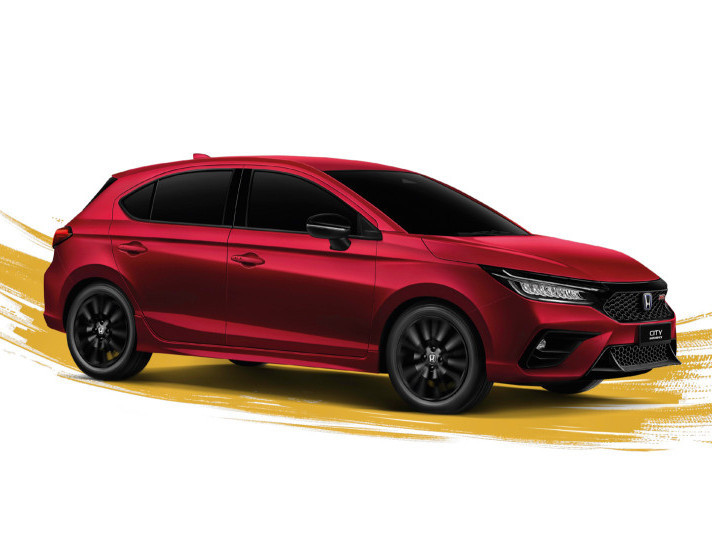
Honda City Hatchback Interior: Surprising Space Inside a Compact Body
WilliamJul 16, 2025
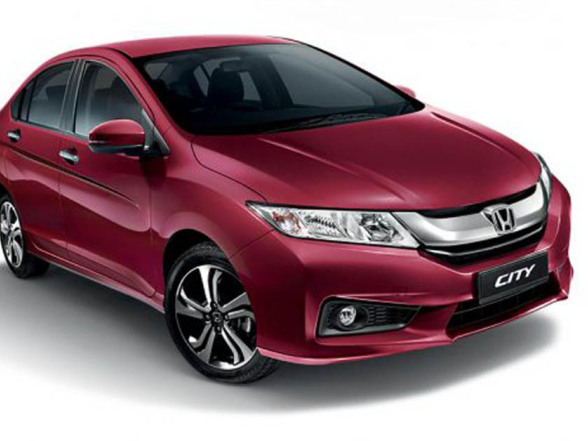
Should You Buy a Used Honda City GM6? – Get Idea Here!
RobertJun 23, 2025
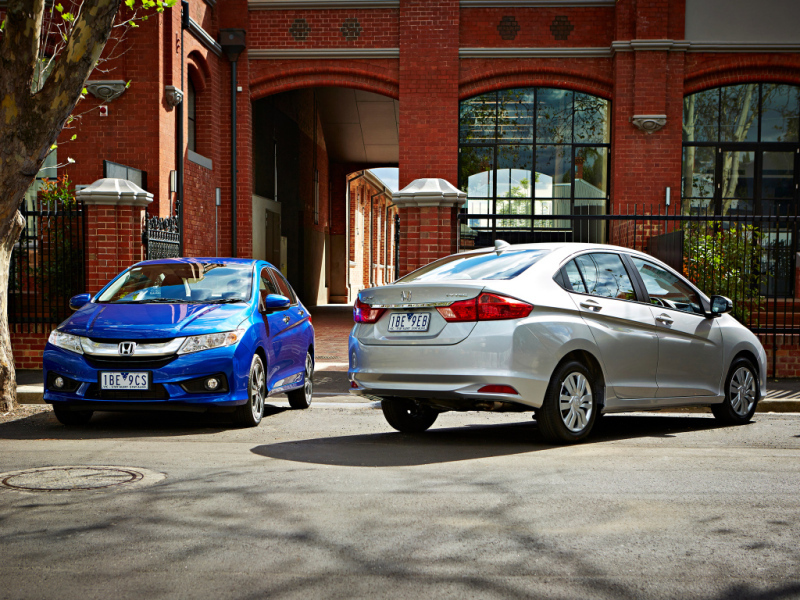
Is it worth buying a used Honda City GM7?
LienMar 7, 2025
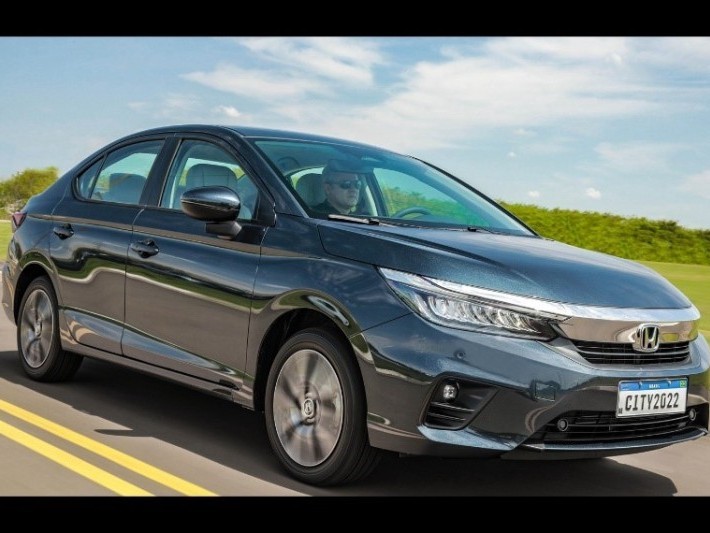
Limited to 99 units! Honda City SE Special Edition goes on sale, accused of clearing inventory?
LienSep 27, 2024
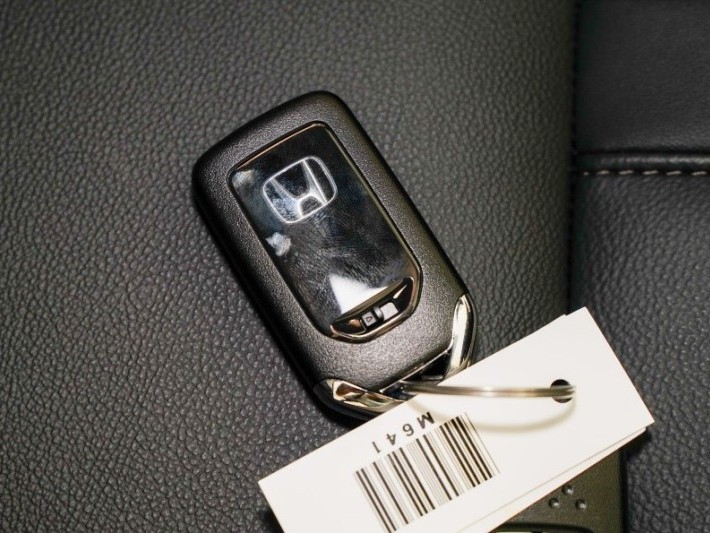
The cost of using Honda City revealed: How much does it actually cost to use for 5 years?
Kevin WongSep 19, 2024
View More












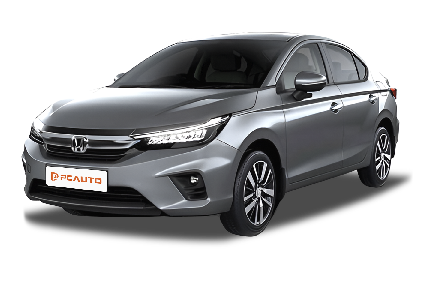
 Cars
Cars




Pros
Cons